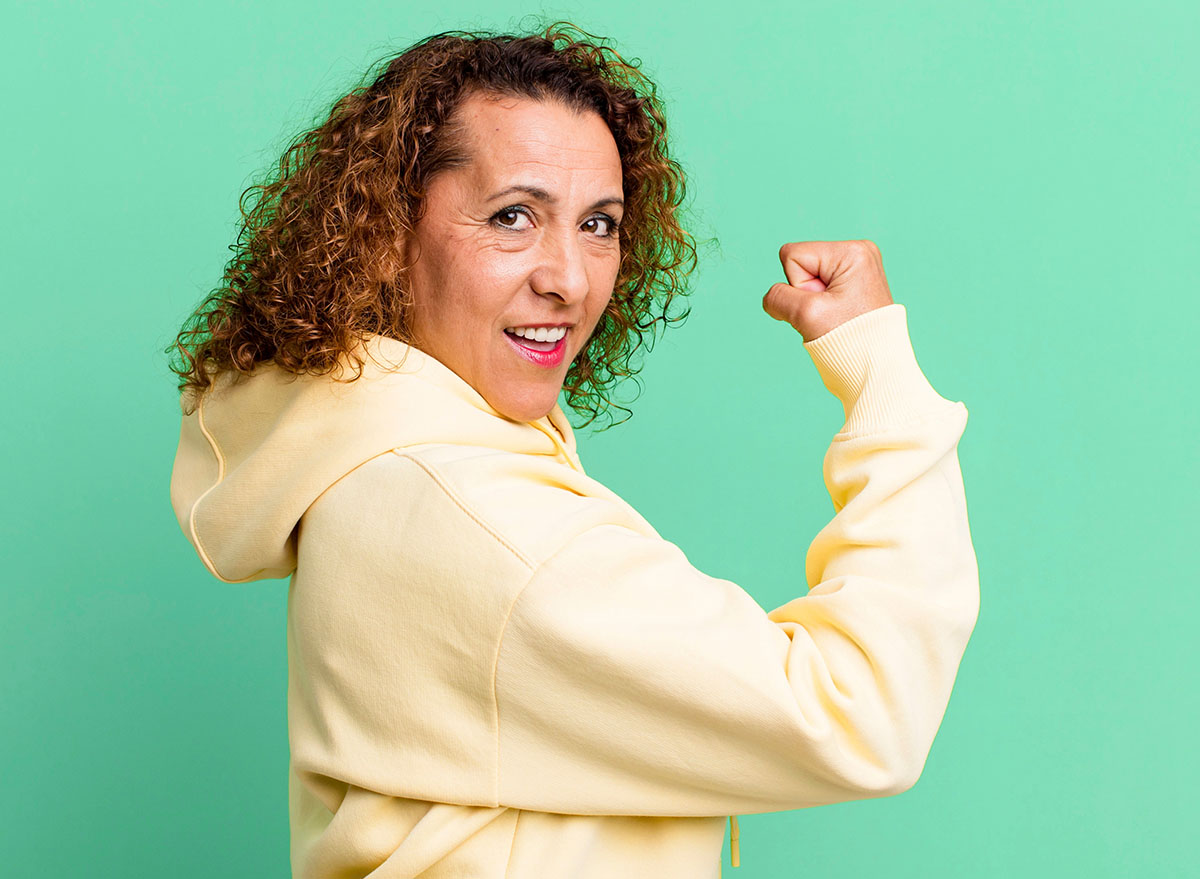5 Standing Strength Moves That Reverse Muscle Loss Faster Than the Gym After 45

Losing muscle as you age is a challenging part of life. If you haven’t been working out, you’ll be relieved to know it’s not too late to get your body into shape and reclaim your independence. We spoke with Felicia Hernandez, NASM-certified personal trainer and community engagement lead at Eden Health Club, who shares five standing strength exercises that reverse muscle loss quicker than the gym after 45.
Muscle loss is real after you hit 30, and it’s crucial to be proactive. In fact, your future depends on it. That’s where standing exercises come in handy.
“Resistance training stands as the official method to fight sarcopenia, which represents age-related muscle deterioration that affects all adult populations,” Hernandez points out. “Standing exercises duplicate the natural movements people perform in their daily activities. Your body maintains a standing position during walking, when you carry items, and when you rise from sitting down. The training method helps you develop strength, which directly benefits your ability to move independently throughout your daily activities. That’s powerful stuff.”
Sit-to-Stand
“This exercise is a game-changer because it targets both your quads and glutes simultaneously, the two largest muscle groups in your body,” Hernandez tells us. “As we age, these muscles are often the first to weaken, and the sit-to-stand directly addresses that. It builds practical, functional strength that transfers to real life: getting out of a chair, climbing stairs, and maintaining independence.”
- Stand tall, feet hip-width apart, in front of a chair.
- Hinge your hips and bend your knees to lower until you’re in a seated position. (Only lower as deep as you can control.)
- Press through your heels to rise, without using your hands as support.
- Perform 3 sets of 15 to 20 reps.
Heel Raises on Unstable Surface
“Toe strength is actually the single best predictor of falls in older adults,” Hernandez tells us. “This exercise strengthens the calf muscles, the peroneal muscles, and the arch of your foot. Using an unstable surface or foam platform (like a ToePro platform) places these muscles in a stretched position, creating a fourfold increase in strength compared to conventional heel raises. This is prevention and reversal happening simultaneously.”
- Stand tall, feet hip-width apart on an unstable or slightly elevated surface.
- Forcefully press your toes into the platform or foam while lifting your heels as high as possible, keeping the movement smooth and controlled.
- Perform 1 set of 60 reps, immediately followed by another set of 12 reps to fatigue.
Lateral Step-Ups With Weight
“Lateral step-ups target your inner quads and hip musculature with minimal stress on the knee joint itself,” Hernandez notes. “A slight hip hinge while raising and lowering isolates the hip rotators and abductors, muscles that stabilize your pelvis and prevent falls. These lateral movements also strengthen the muscles machines often miss, creating a more complete reversal of age-related decline.”
- Stand beside a step or low platform, holding a dumbbell or kettlebell.
- Step up and across the surface laterally, leading with one leg.
- Maintain a tall posture and braced core.
- Perform 2 sets of 25 reps on each leg, completing all on one side before switching over to the other.
Straight-Arm Pullback With Band
“Postural strength is critical after 45,” Hernandez points out. “This move targets your lower trapezius, a crucial postural muscle, along with your triceps and forearm flexors. Better posture means better breathing, less back pain, and a more confident presence. The resistance band makes this accessible and scalable, and you can do it literally anywhere.”
- Attach a resistance band to a sturdy pole or door at shoulder level.
- Begin facing away from the anchor point, holding the band with both arms lengthened.
- Pull the resistance straight back, squeezing your shoulder blades as you do so and keeping the movement slow.
- Use control to return to the start position.
- Perform 1 set of 60 reps, immediately followed by another set of 12 reps to fatigue.
Oblique Twist and Lift With Band
“Your core, especially your obliques, stabilizes your entire spine and supports rotational movement,” Hernandez says. “This exercise targets your abdominal obliques, rhomboids, and serratus anterior. A strong core isn’t just about aesthetics; it’s about functional movement, injury prevention, and maintaining the ability to twist, bend, and move naturally through life.”
- Attach a resistance band to a sturdy pole or door at waist height.
- Start standing perpendicular to the anchor point with the band under tension.
- Keep that tension strong as you twist your torso and lift the band diagonally across the body. Use control as you do so to avoid a swinging motion.
- Perform 25 reps on each side, finishing all on one side before switching to the other.